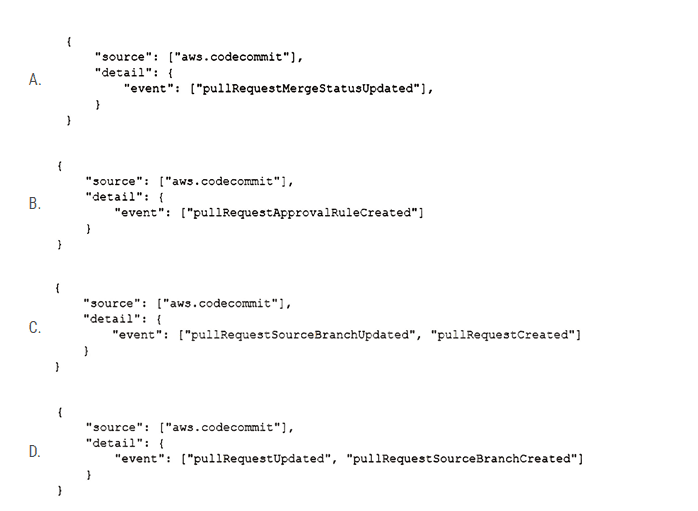Amazon Web Services DVA-C02 - AWS Certified Developer - Associate
A company has an analytics application that uses an AWS Lambda function to process transaction data asynchronously A developer notices that asynchronous invocations of the Lambda function sometimes fail When failed Lambda function invocations occur, the developer wants to invoke a second Lambda function to handle errors and log details.
Which solution will meet these requirements?
A developer is building an application that gives users the ability to view bank account from multiple sources in a single dashboard. The developer has automated the process to retrieve API credentials for these sources. The process invokes an AWS Lambda function that is associated with an AWS CloudFormation cotton resource.
The developer wants a solution that will store the API credentials with minimal operational overhead.
When solution will meet these requirements?
A company wants to automate part of its deployment process. A developer needs to automate the process of checking for and deleting unused resources that supported previously deployed stacks but that are no longer used.
The company has a central application that uses the AWS Cloud Development Kit (AWS CDK) to manage all deployment stacks. The stacks are spread out across multiple accounts. The developer’s solution must integrate as seamlessly as possible within the current deployment process.
Which solution will meet these requirements with the LEAST amount of configuration?
An application stores user data in Amazon S3 buckets in multiple AWS Regions. A developer needs to implement a solution that analyzes the user data in the S3 buckets to find sensitive information. The analysis findings from all the S3 buckets must be available in the eu-west-2 Region.
Which solution will meet these requirements with the LEAST development effort?
A developer is writing unit tests tor a new application that will be deployed on AWS. The developer wants to validate all pull requests with unit tests and merge the code with the main branch only when all tests pass
The developer stores the code in AWS CodeCommit and sets up AWS CodeBuild to run the unit tests. The developer creates an AWS Lambda function to start the CodeBuild task. The developer needs to identify the CodeCommit events in an Amazon EventBridge event that can invoke the Lambda function when a pull request is created or updated.
Which CodeCommit event will meet these requirements?

A developer wants to store information about movies. Each movie has a title, release year, and genre. The movie information also can include additional properties about the cast and production crew. This additional information is inconsistent across movies. For example, one movie might have an assistant director, and another movie might have an animal trainer.
The developer needs to implement a solution to support the following use cases:
For a given title and release year, get all details about the movie that has that title and release year.
For a given title, get all details about all movies that have that title.
For a given genre, get all details about all movies in that genre.
Which data store configuration will meet these requirements?
A company is using the AWS Serverless Application Model (AWS SAM) to develop a social media application. A developer needs a quick way to test AWS Lambda functions locally by using test event payloads. The developer needs the structure of these test event payloads to match the actual events that AWS services create.
A company is creating an application that processes csv files from Amazon S3 A developer has created an S3 bucket The developer has also created an AWS Lambda function to process the csv files from the S3 bucket
Which combination of steps will invoke the Lambda function when a csv file is uploaded to Amazon S3? (Select TWO.)
A developer is creating a serverless application that uses an AWS Lambda function The developer will use AWS CloudFormation to deploy the application The application will write logs to Amazon CloudWatch Logs The developer has created a log group in a CloudFormation template for the application to use The developer needs to modify the CloudFormation template to make the name of the log group available to the application at runtime
Which solution will meet this requirement?



